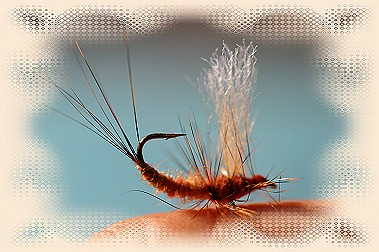My EasyPeasyUSD is a 'concept' fly for
presenting an effective light pattern to fish
feeding on the adult insects and the Flat Spent
Spinner, for the tail end of the hatch. Tie it
to match the colour of the hatch.
Materials EasyPeasy
Hook: 1 longshank grub hook.
Thread: Uni 8/0 thread or Pearsall's silk, to
match the hatch.
Tail: Spade hackle fibres – colour to match
the natural.
Rib: 2 strands of gold wire or thread to
lay side-by-side when wound.
Abdomen: Fine fur dubbing to match the hatch.
Thorax cover: Pheasant tail fibres.
Hackle: Neck or saddle, not too stiff.
Wing: Polypropylene yarn.
Thorax: Spiky dubbing.
Instructions EasyPeasy
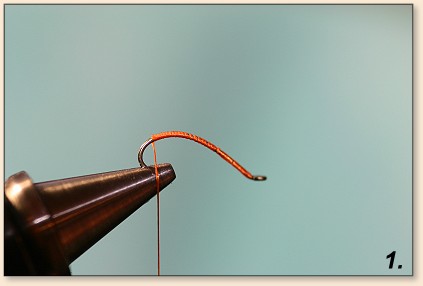
1. Place your grub hook in the vise and run
the thread around the bend as shown.
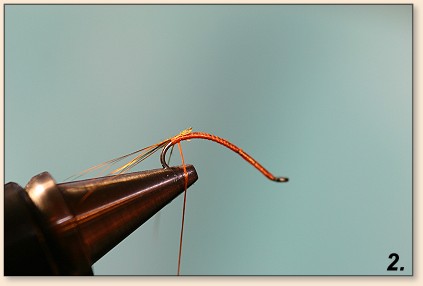
2. Tie in the hackle fibres as shown, for
a tail. Overall tail length should not exceed
total body length.
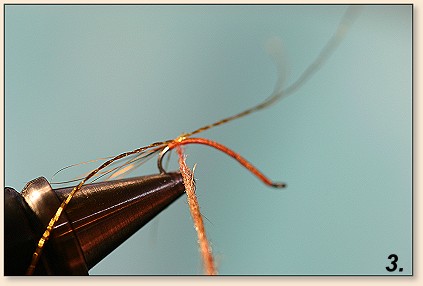
3. Tie in the gold rib and dub the soft
abdomen mix onto the thread.
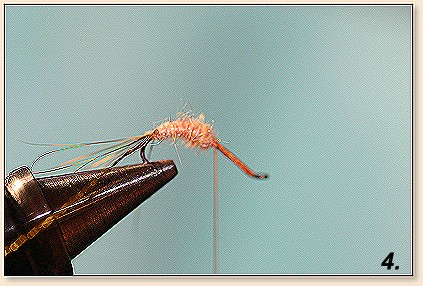
4. Wind the dubbing onto the abdomen, covering
just half of the body length.
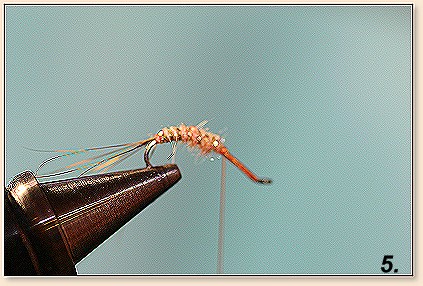
5. Rib it making the two strands lay closely
side by side. Tie in. Cut off excess.
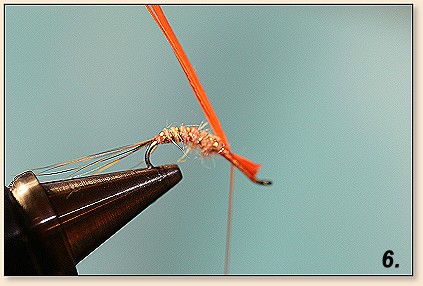
6. Tie in the thorax cover strands on top of
the hookshank two turns, cut off excess stubs.
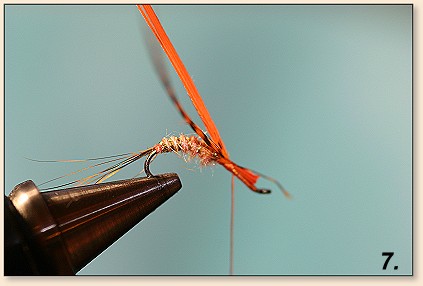
7. Tie in the hackle on the nearside of the PT
fibres and concave side up, wind thread along
thorax halfway toward the head; cut off hackle stub.
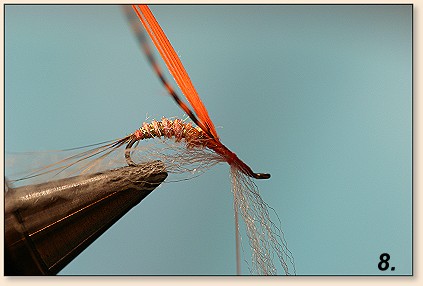
8. Tie in a little Poly-yarn for a wing, two
turns to secure.
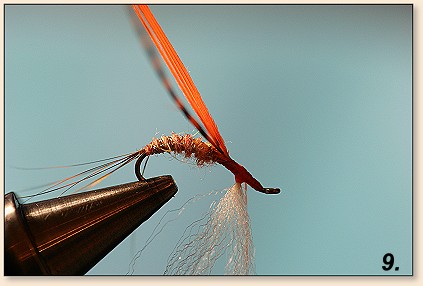
9. Pull wing upright (downwards) and take
a few turns around it to secure.
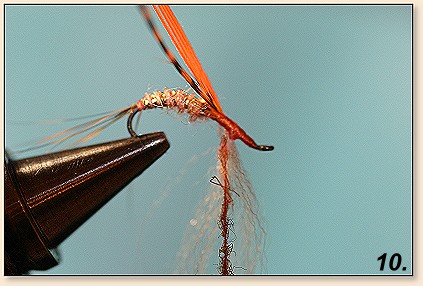
10. Add thorax dubbing mix to the thread.
This mix can be more spiky.
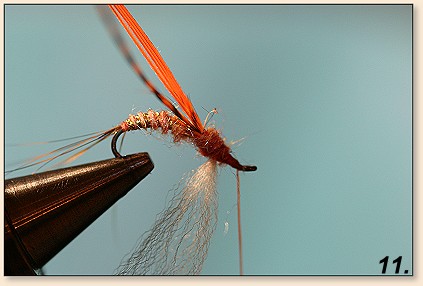
11. Wind the thorax mixture to create a
shapely thorax. Run thread to the eye.
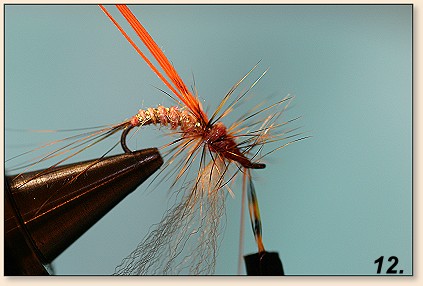
12. Palmer the hackle about six turns to
cover the thorax, wind all the way to the
eye, catch the hackle in with the thread
and wind the thread back three close turns.
Nip out excess hackle.
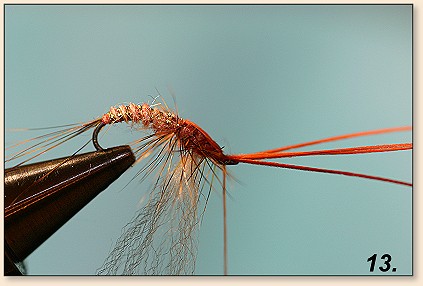
13. Split the hackle on top of the shank,
lengthwise, pull the thorax cover through
and secure with three more turns of thread.
Cut off excess.
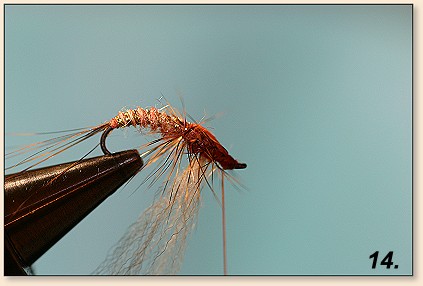
14. Whip finish, cut off thread and varnish
the thorax cover carefully.
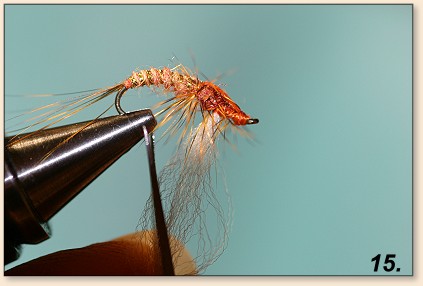
15. Cut wing to shape.

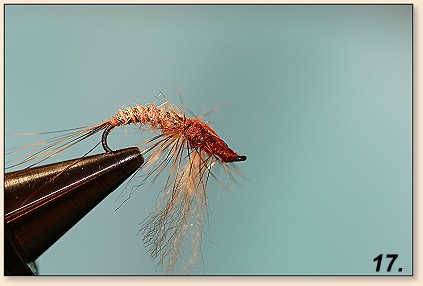
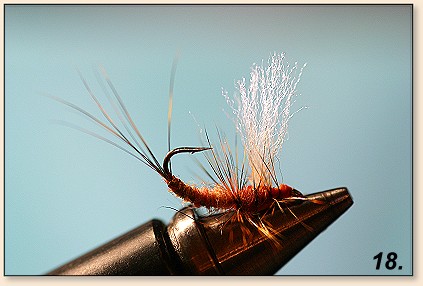
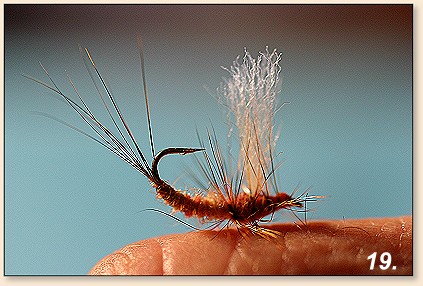
DONE – treat with liquid floatant and leave
to dry before losing it in a tree. ~ Roy
About Roy:
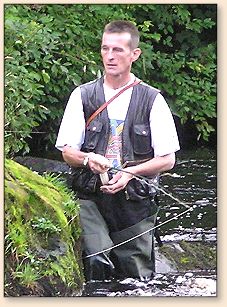 Born 1953 near the Giant's Causeway, Northern
Ireland; started fishing when I was four or five,
flyfishing a few years later, tying flies since
I was about ten years old, bred bantams ducks
and pheasants for their feathers. Self taught
tyer, learned from Hanna, Skues, Stewart and
Pritt. There were fairies at the bottom of the
garden and a trout stream at the end of the
first field.
Born 1953 near the Giant's Causeway, Northern
Ireland; started fishing when I was four or five,
flyfishing a few years later, tying flies since
I was about ten years old, bred bantams ducks
and pheasants for their feathers. Self taught
tyer, learned from Hanna, Skues, Stewart and
Pritt. There were fairies at the bottom of the
garden and a trout stream at the end of the
first field.
When the stream was dredged in the late 1960's
I rebuilt it as a self cleaning entity producing
a good head of brown trout.
Founder member of the Wandle Wands, the self-appointed
group for restoration of the River Wandle, a tributary
of the Thames in London UK, once a designated sewer,
now producing wild fish in excess of ten pounds.
My river flies are mainly nymphs from Skues; my Avon
Special emerger, developed for English chalkstreams
1981; my Reversed Parachute and Cranky Cripple emergers,
similarly designed for those canny southern browns; my
EasyPeasyUSD for presenting an effective light pattern
to fish feeding on the adult insects and the Flat Spent
Spinner, for the tail end of the hatch.
Favourite flies include the hare's ear & copper
wire nymph; CDC & Elk, Skues' Little Red Sedge
and various homespun caddis patterns for pupa
and adults.
Ambitions – to ensure my grandchildren have a
beautiful planet to live on and to live forever
by an ever changing stream full of trout grayling
and salmon.
Other minor obsessions - Citroen DS and Sharpes Canes.
~ Roy

